Tadla Azilal: Investment Environment in Tadla Azilal Region in Morocco
Ahmed El Haouti, Director, CRI of Tadla Azilal Rachid Zaarati, CEO, AGRUMCO & President of the Regional Confederation of Moroccan Businesses (CGEM) Abderrahim Chatbi, CEO, Univers Genisses
As soon as the government announced the creation of a highway connecting the region to the rest of the country, important investors rushed on the region.
Interview with
Ahmed El Haouti, Director, CRI of Tadla Azilal
Rachid Zaarati, CEO, AGRUMCO & President of the Regional Confederation of Moroccan Businesses (CGEM)
Abderrahim Chatbi, CEO, Univers Genisses
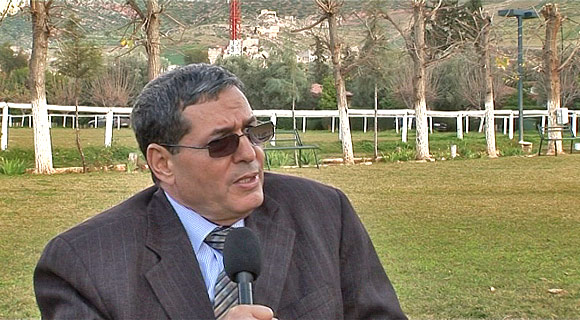
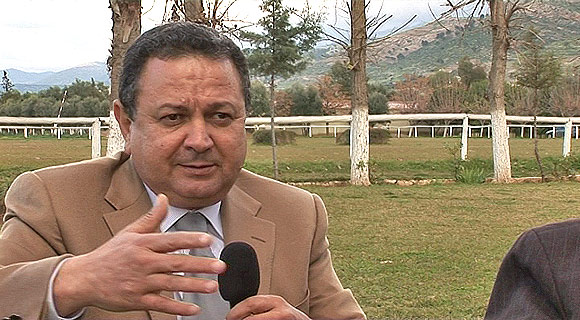
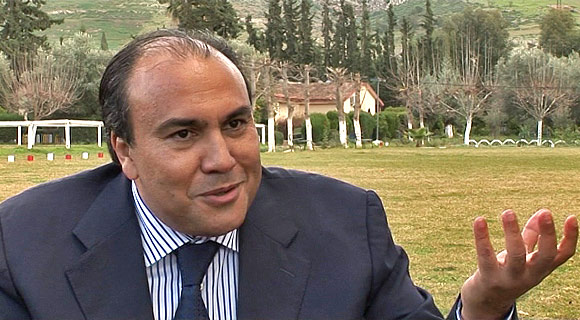
How would you describe your region to a foreign investor, or a tourist, or a businessman interested in it? What makes it unique, what makes it attractive?
Ahmed El Haouti, Director, CRI of Tadla-Azila: We advertise our region as the heart of Morocco. It has a central and strategic position: 200km away from Casablanca, 200km away from Marrakech, and almost 300km away from Fes: 3 major cities and markets.
We are working on projects aiming to reduce the distance and time between the region of Tadla-Azilal and these economic hubs. The most important one, which will boost economic development in the region, is the highway that will connect Beni Mellal to Casablanca on a distance of 160km. 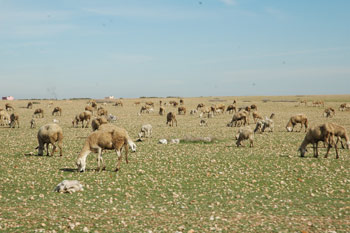
His Majesty has also given instructions to start another project of a highway that would connect Marrakech to Fes via Beni Mellal. The region of Tadla-Azilal also benefits from an important and diversified agriculture, and abundant water supply which, I might add, is shared generously and for free with Morocco’s other regions.
Casablanca, Marrakech and the coastal region between Casablanca and Safi are all supplied by Tadla-Azilal’s water resources. We can reach about 10 million consumers within a 300 km radius. Our region is also located on the circuit to the imperial cities (Marrakech-Fes-Meknes), which attracts many tourists, and we are near the Atlas Mountains and desert regions that attract tourists, such as Ouarzazate. We are a welcoming region, and truly the heart of Morocco.
Studies and surveys have been carried out regarding agriculture development, as part of the Plan Maroc Vert and Plan Emergence. We have identified 10 sectors with relative advantage: citrus fruit, sugar, milk products, meat, cereals, oils, spices, chili pepper. We are Morocco’s first pomegranate producer. Sugar and milk products are well exploited sectors, but the other ones offer a great potential.
This study came to the conclusion that an agribusiness hub should be created in the region, dedicated to agriculture and agribusiness development and technology. It will span 200 hectares and be built by a private developer contractor. We also aim for the price of our water to be the most competitive. In addition to the agro-industrial hub, there will be a logistics hub, dedicated to the creation of a dry port for example.
We want to promote research, innovation, developmentally sustainable industry and renewable energy. Out of Morocco’s 6 agriculture hubs, ours is to be ranked 3rd. Our region is formed of a plain as well as mountains, whose potential is just as unexploited. Our region was selected among the 8 regions of the country concerned by the plan for tourism development “Vision 2020”. 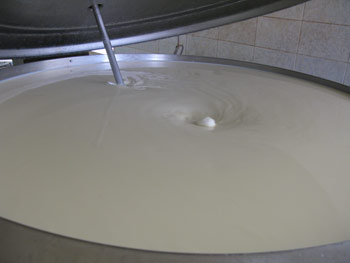
We promote nature discovery and eco-friendly tourism, as we have Morocco’s best preserved forests and wish to keep it that way. Our region has been in collaboration with the French department of Isere, expert in rural tourism, since 1985.
It is also a recognized place for parachuting. It welcomes international top level athletes, especially in the winter. We are studying the opportunity to install this ski resort with the “fédération Marocaine du Ski”, if this project is selected, it will be one of the biggest ski resorts in Africa. Tourists can also go water skiing and boating on a 17km large lake, created by a weir.
Our region has been dubbed “a geologist’s paradise” by geologists, as it has numerous prehistoric sites, fossils and traces of dinosaurs. A 165 million years old skeleton of a dinosaur was discovered here. We are working on a project to create the first geopark in Africa, in collaboration with the UNESCO. A paleontological museum is being built too.
Of course there is the mining sector. We are beginning to exploit our abundant resources in phosphate. Exporting phosphate has significantly improved our BOP. The sector is developing considerably in an eco-friendly manner: pipelines are to be built to transport phosphate to the port, rather than trains.
“
The region of Beni Mellal and Tadla-Azilal is Morocco’s largest irrigated perimeter (190’000 hectares; 8 big dams). The region benefits from a flourishing agriculture. It produces citrus fruits, sugar, wheat, etc..
“
As a representative of the agriculture sector, what is your message for foreign investors etc.?
Rachid Zaarati, CEO of AGRUMCO: The region of Beni Mellal and Tadla-Azilal is Morocco’s largest irrigated perimeter (190’000 hectares; 8 big dams). The region benefits from a flourishing agriculture. It produces citrus fruits, sugar, wheat, etc.
It has been somewhat forgotten and left behind, but it is now rapidly developing thanks to infrastructure. As we’ve only just begun developing, there is everything still to do in the field of agriculture.
What are the region’s first needs?
Rachid Zaarati, CEO of AGRUMCO: We need industrial infrastructure in order to increase our product’s value added. Many sectors are yet unexploited: citrus fruit, canning, syrup, frozen food, etc.
There is great potential in the region, especially now that it is about to become Casablanca’s “backcountry”: only 1,5 hour away thanks to the highway.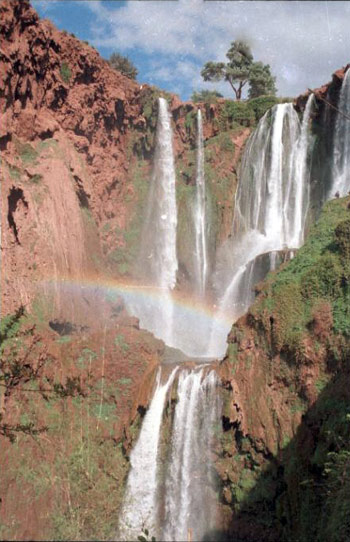
What guarantees foreign investors success in the region?
Rachid Zaarati, CEO of AGRUMCO: Firstly, the good quality of our products. Secondly, experienced and skilled labor is available. Besides, land itself is very affordable compared to other regions, and soon, the region will be 2 hours away from Morocco’s biggest port.
What about the livestock sector?
Abderrahim Chatbi, CEO of Univers Genisses: Our region has a tradition of agriculture. We are all sons of cultivators. Recent development has taken place as a result of the “Green Plan” (Plan Maroc Vert). The plan revolves around two key concepts:
1) creating synergy between existing projects 2) a social approach of small cultivators. Big and small actors take part together in the project. The region is favorable to livestock. More than 30’000 stock breeders group together within 125 cooperatives. All sectors are represented by the regional COMADER (Confédération Marocaine de l’Agriculture et du Développement Rural– Moroccan Alliance for Agriculture and Rural Development).
But we lack good promotion of our products: we produce them, but we don’t pack them, etc. We need to work on this, with a view to increase their value-added in the region, whether for national or international export.
Our region produces 35% of the national meat production. His Majesty has inaugurated a project of 20 million euros, to add value to the products.
We will assure good quality and food safety. We want to create a “new generation” of Moroccan products that would still be affordable for Moroccan consumers. We want to adapt to European norms in order to export our meat to the European market.
How do you advertise the region’s incredible potential?
Ahmed El Haouti, Director, CRI of Tadla-Azilal: The CGEM is in direct contact with Moroccan businessmen and advertises the region. We will attend international fairs, invite investors to visit the region and discover its potential.
As soon as the government announced the creation of a highway connecting the region to the rest of the country, important investors rushed on the region. A website was launched by the CRI to promote the region (www.tadla-azilal.ma).
We created a promotional film on rural tourism that was shown in various international tourism fairs. The creation of a regional branch of the CGEM will b oost this promotion. Of course we need to advertise our potential better through media, but we need to be able to welcome and accompany investors for it to be worth it, and that’s something we still need to work on.
oost this promotion. Of course we need to advertise our potential better through media, but we need to be able to welcome and accompany investors for it to be worth it, and that’s something we still need to work on.
In 2003 (right after the creation of the CRI) authorized investment hardly reached 300 million dirhams. In 2008, it reached 7 billion dirhams, and 9 billion in 2010 after a slight decrease in 2009 due to the financial crisis. However, there is a vast potential that remains unexploited and investment is welcome.
Can you tell us more about the CGEM?
Ahmed El Haouti, Director, CRI of Tadla-Azilal: We wanted to create an entity that would help the regional small and medium enterprises grow, help them fix their problems, and accompany them to the stage where they can expand into international market. This is what the CGEM does.
The CGEM wants to create a regional radio station, to keep everyone up to date regarding the region’s economic activity.
And the private sector?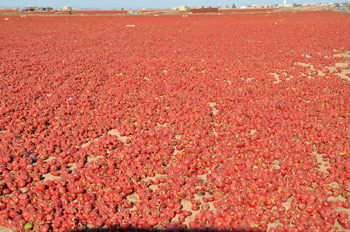
Rachid Zaarati, CEO of AGRUMCO: 90% of the active population is employed within the private sector. The sector has a responsibility to support these people as well as Morocco’s economic development.
It has flourished during the 10 past years, and today numerous construction projects are under way, sometimes in partnership with the government.
Why did you choose Tadla-Azilal over other Moroccan regions?
Abderrahim Chatbi, CEO of Univers Genisses: Of course I am attached to the region I was born in. I want to invest and take part in its development, even though I do have business going on in other regions. The region’s fantastic potential makes it worth taking risks, and it is deeply linked with Morocco’s future.
Rachid Zaarati, CEO of AGRUMCO: Besides, 80% of the region’s production is treated elsewhere (in Casablanca, Marrakech, Meknes), which has to change, thanks to investment and infrastructure. This should create many jobs in the region.
You mentioned public-private partnership. Can you tell us more?
Ahmed El Haouti, Director, CRI of Tadla Azilal: The public sector wants to bring infrastructure up to speed in order to attract investment. And this can be taken care of by the private sector.
That is why in 2002, investment management was decentralized, from Rabat to regional centers managed by local businessmen. Regional centers for investment are not a necessary step for investors, but they offer to accompany them in the region throughout the process.

Local councilors take an active part in the development process too, since the Ministry has delegated part of its power to local councilors, such as authorizing investment and selling national land.
Investment has become a regional matter. I am convinced that Morocco’s newly region-based strategy will boost its development.